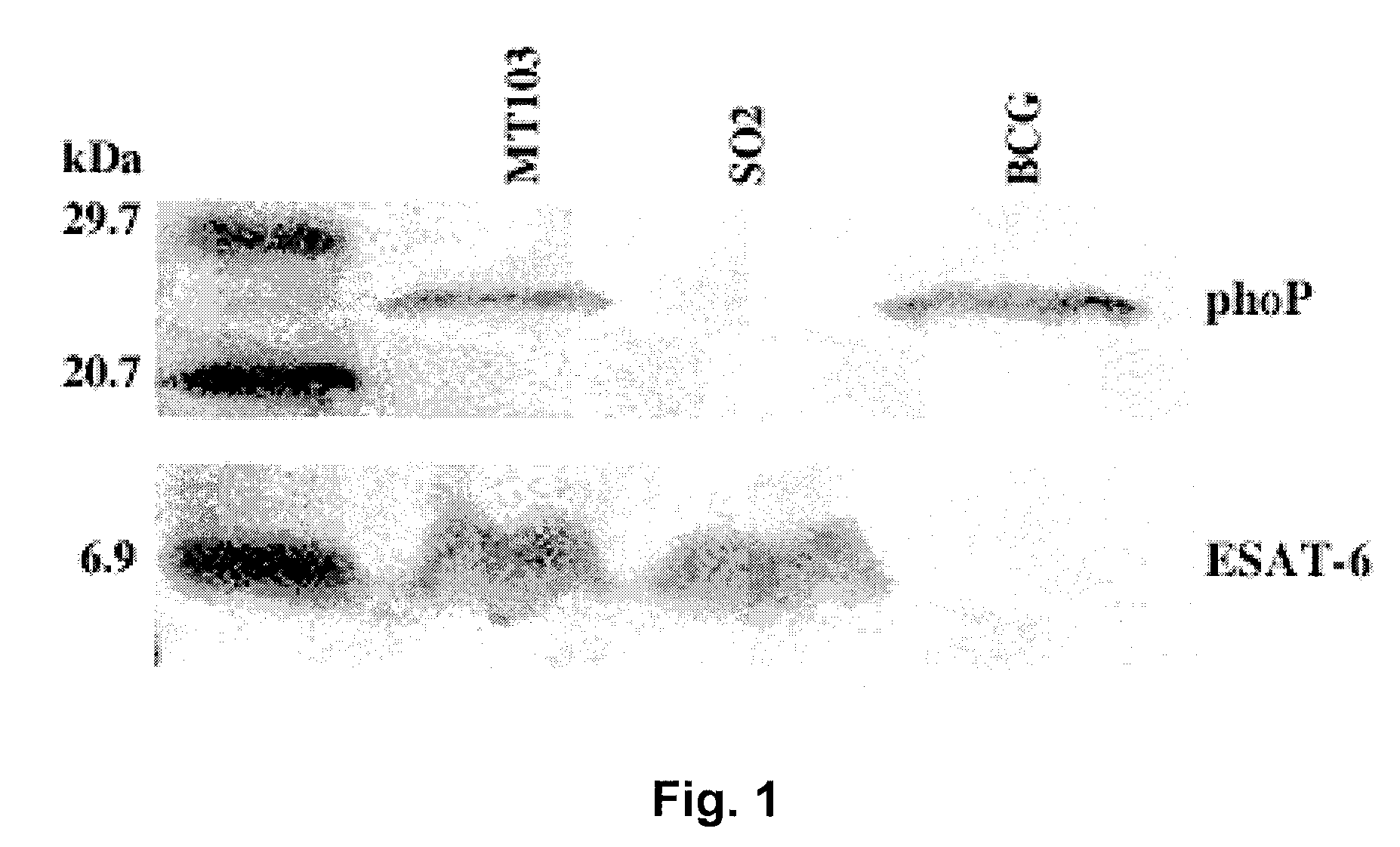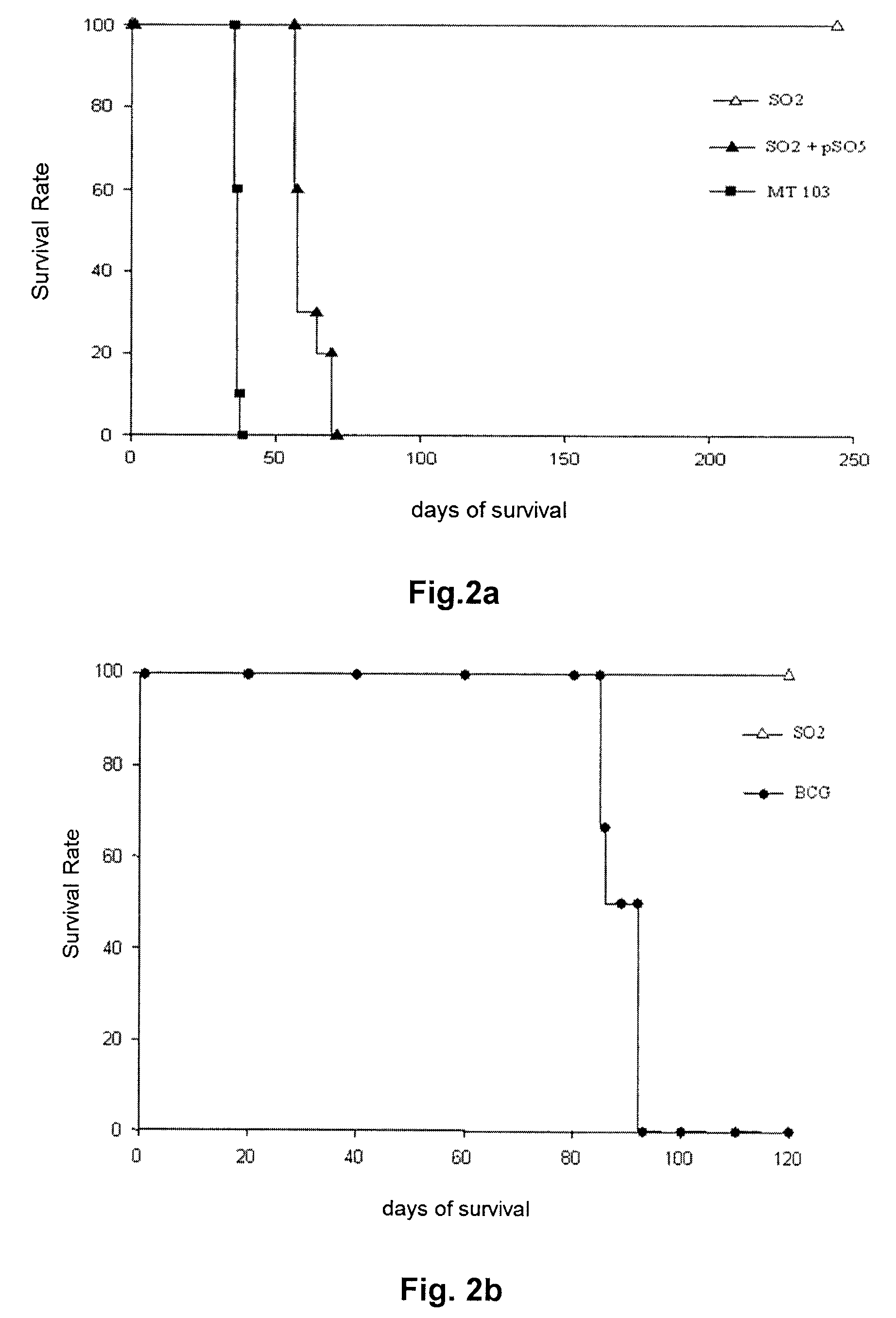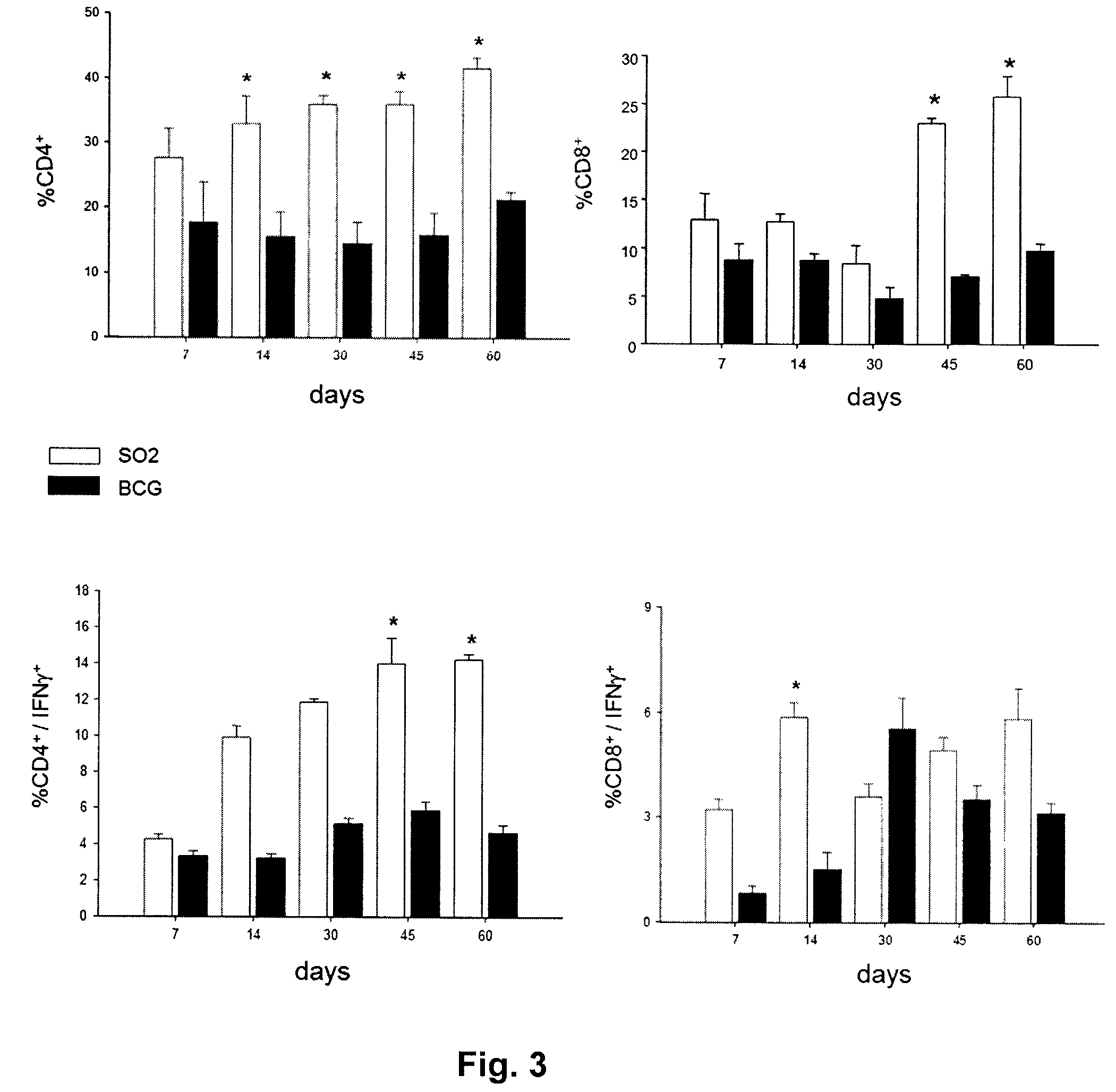Tuberculosis vaccine
a microorganism and vaccine technology, applied in the field of isolated microorganisms, can solve the problems of limited use of bcg vaccine in controlling the disease, lack of complete protective effect,
- Summary
- Abstract
- Description
- Claims
- Application Information
AI Technical Summary
Problems solved by technology
Method used
Image
Examples
example 1
Materials and Methods
[0076]1.1.—Protein Extraction and Immunoblotting.
[0077]Polyclonal antibodies against the PhoP protein were obtained, which received four doses of PhoP (0.5 mg), in weeks 0, 4, 8, 12 and 16, respectively. The anti-PhoP antibodies were detected using the ELISA test (ZEU-Immunotec Zaragoza, Spain). Monoclonal antibodies against ESAT-6 were kindly supplied by Pym, A. S., Brodin, P., Brosch, R., Huerre, M. & Cole, S. T. Loss of RD1 contributed to the attenuation of the live tuberculosis vaccines Mycobacterium bovis BCG and Mycobacterium microti. Mol Microbiol 2002, 46(3), 709-717. Cell-free protein extracts of mycobacteria were prepared from early cultures in log-phase that were grown in Middlebrook 7H9-ADC broth, following the usual methods. Sambrook, J. a. R., D W. Molecular Cloning a laboratory manual, Cold Spring Harbor Laboratory Press, New York, 2001. The M. tuberculosis protein extracts were filtered through a Millex-GP filter with a pore size of 0.22 μm (Mill...
example 2
Characterisation of M. tuberculosis phoP
[0092]Evidence for the involvement of the phoP gene in global regulation of mycobacteria genetic circuits was provided by the observation of changes in bacillus size and cording properties of growing cells harbouring the inactivated phoP gene. Given the key properties of secreted antigens as determinants of protection against tuberculosis, we hoped to determine whether the pleiotropic effects of the phoP gene mutation extended to influence synthesis of the major immunodominant antigen: ESAT-6. Western blot analysis was carried out on the SO2 strain, BCG and MT103, using antibodies raised against the PhoP protein and ESAT-6. The results clearly showed that the PhoP protein was expressed constitutively in the M. tuberculosis MT103 and BCG strains, whilst it was completely absent in the SO2 strain of the present invention. In contrast, the levels of expression of ESAT-6 in the supernatant of cultures of the SO2 strain were similar to those detect...
example 3
Survival of Mice Infected with the Strains of the Present Invention and BCG
[0093]The survival of immunocompromised SCID mice was evaluated after aerosol infection (approximately 20 CFU) with the MT103 strain, with SO2 and with SO2 complemented with the phoP gene (SO2+pSO5). Perez, E., Samper, S., Bordas, Y., Guilhot, C., Gicquel, B. & Martin, C. An essential role for phoP in Mycobacterium tuberculosis virulence. Mol Microbiol 2001, 41(1), 179-187. All of the mice infected with SO2 survived for more than 245 days. In contrast, all of the SCID mice infected with MT103 or complemented M. tuberculosis S02-pSO5 had died 62 days after infection, indicating a recovery of the virulence of the complemented strain (FIG. 2a).
[0094]The attenuation of the SO2 strain was also compared with BCG in SCID mice after intravenous administration. Groups of SCID mice were inoculated with a number of doses (2×105, 2×104 and 2×103 CFU) of BCG Pasteur or the SO2 strain (5.4×106, 5.4×105 and 5.4×104 CFU) by ...
PUM
| Property | Measurement | Unit |
|---|---|---|
| pore size | aaaaa | aaaaa |
| pH | aaaaa | aaaaa |
| pH | aaaaa | aaaaa |
Abstract
Description
Claims
Application Information
 Login to View More
Login to View More - R&D
- Intellectual Property
- Life Sciences
- Materials
- Tech Scout
- Unparalleled Data Quality
- Higher Quality Content
- 60% Fewer Hallucinations
Browse by: Latest US Patents, China's latest patents, Technical Efficacy Thesaurus, Application Domain, Technology Topic, Popular Technical Reports.
© 2025 PatSnap. All rights reserved.Legal|Privacy policy|Modern Slavery Act Transparency Statement|Sitemap|About US| Contact US: help@patsnap.com



